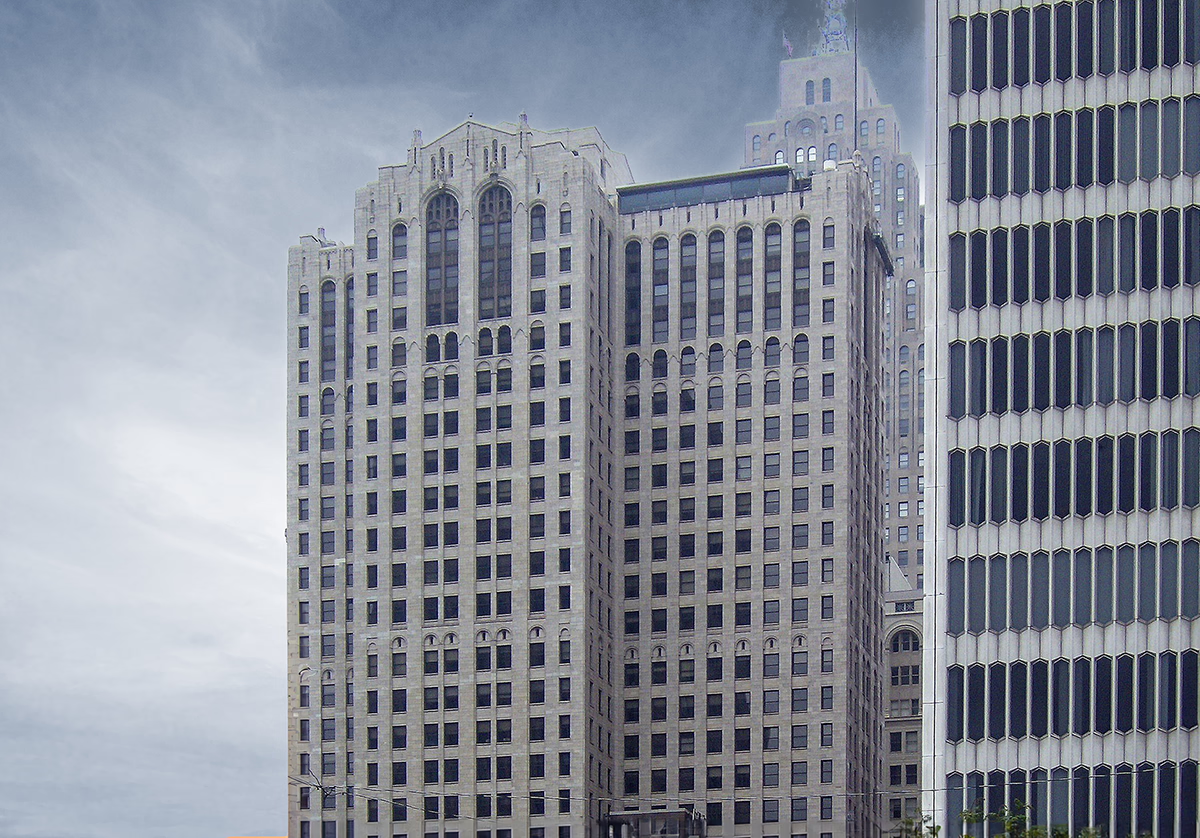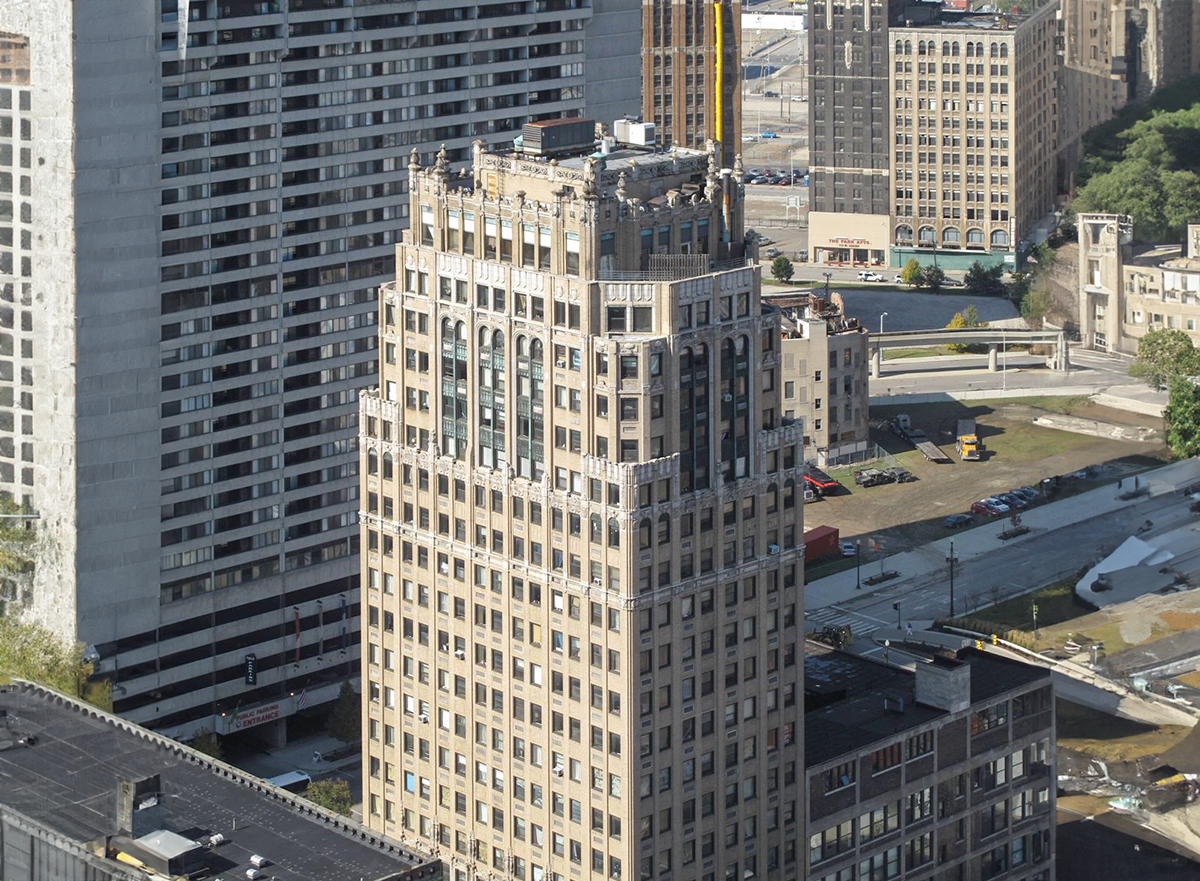Buhl Building vs Industrial Building


Comparing the Buhl Building and the Industrial Building is interesting because they both stand in Detroit, MI, and were completed within 3 years of each other, but they were designed by different architects.
This offers a unique glimpse at how rival designers approached projects in the same city during the same era.
Height & Size
The Buhl Building is clearly the larger tower of the two, both in terms of height and number of floors. It rises to 367ft (112m) with 27 floors above ground, while the Industrial Building reaches 240ft (73m) with 21 floors above ground.
Of course, each project may have faced different briefs or regulatory constraints, which we don't really know about and could also explain the outcome.
Architectural Style
Both the Buhl Building and the Industrial Building were designed in line with the aesthetic conventions of the Neogothic style.
Both buildings were completed when the Neogothic style was already past its peak. This makes them feel like late echoes of the movement, more reflective of continuity or nostalgia than of cutting-edge design at the time.
Uses
The Buhl Building is primarily commercial, while the Industrial Building is primarily residential.
Originally, the Industrial Building was designed for commercial, but over time it was converted to residential. The Buhl Building by contrast has maintained its original role.
The Industrial Building offers 127 residential units.
Structure & Facade
Both the Buhl Building and the Industrial Building rely on a Frame structural system.
A frame structure uses a grid of columns and beams to carry the building's loads. This frees the walls from structural duties, allowing for flexible floor plans and larger windows.
They also employ the same type of facade, a Masonry facade.
A masonry facade gives the building a heavier, more traditional appearance. It often conceals a frame structure behind it, creating the look of solid walls without carrying the main loads.
| Buhl Building | Industrial Building | |
|---|---|---|
| Smith, Hinchman & Grylls | Architect | Louis Kamper |
| 1924 | Construction Started | 1926 |
| 1925 | Year Completed | 1928 |
| Neogothic | Architectural Style | Neogothic |
| Commercial | Current Use | Residential |
| 27 | Floors Above Ground | 21 |
| 2 | Floors Below Ground | 1 |
| 107 | Last Floor Height | 70 |
| 112 m | Height (m) | 73 m |
| Frame | Structure Type | Frame |
| Steel | Vertical Structure Material | Steel |
| Concrete | Horizontal Structure Material | Concrete |
| No | Facade Structural? | No |
| Limestone | Main Facade Material | Brick |
| MI | State | MI |
| Detroit | City | Detroit |
| 535 Griswold Street | Address | 1410 Washington Boulevard |